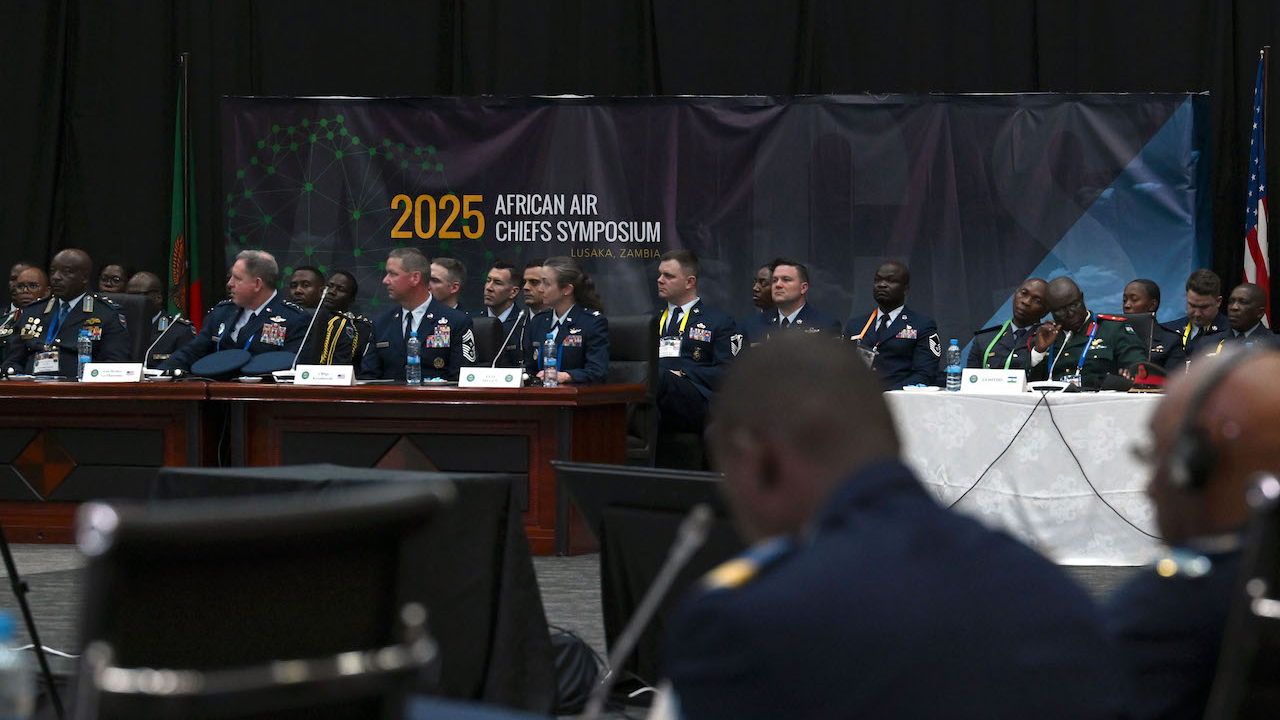Grob lands African ‘first’ with delivery to Ethiopia
Late last year, H3 Grob Aircraft completed the delivery of a first batch of Grob G 120TPs to the Ethiopian Air Force. As African Aerospace was going to press, a second batch was expected to be delivered to fulfil the EAF’s requirement for 12 aircraft. Alan Warnes reports.

The Ethiopian deal, concluded after years of negotiation, marks Grob’s first entry into Africa. However, it hopes that this will be followed by several more on the continent over the coming months.
The turboprop Grobs have replaced Ethiopia’s surviving SF 260TPs, delivered in 1988.
A computer-based training system and flight training devices are also part of the deal, while a pilot evaluation selection system (PSES) could be added later.
Ishan Sahgal, H3 Grob’s new chief operating officer said: “We signed the contract in June 2019 and deliveries started in August. The first batch was completed in September.”
A hand-over ceremony was delayed by several days because of the crash of an Ethiopian Air Force Sukhoi Su-27 on October 11. Reports from Ethiopia claim the pilot also flew the Grob G 120TP, but H3 Grob would only confirm six instructor pilots and 12 technicians were trained at its facility near Munich.
The first deliveries saw EAF pilots sitting in the rear seat, which meant there was no ferry tank.
Thomas Reinert, Grob’s test and chief instructor pilot, said: “We stopped overnight in Crete, then Aquabar in Jordan, then to Yenbo, Saudi Arabia and Sudan to Debre Zeit. It would have been quicker to fly over Egypt but, due to flight restrictions in their airspace, we opted to go on a longer route.”
While the aircraft have been flown to Ethiopia’s main operating base at Debre Zeit, they will eventually be relocated to Dire Dawa, where the air force’s flying training facility is based.
The EAF formerly used turboprop SF 260s for ab initio training, which led into the Aero L-39C for advanced jet training before progressing to the Sukhoi Su-27 Flankers.
Now the G 120TPs have replaced the tired SF 260TPs, while six L-39Cs are set to be upgraded with the Genesys interactive display unit (IDU) 680 system already fitted into the Grob trainers.
Reinert added: “This will mean a seamless transition to the L-39Cs, thus minimising the time to convert to the new trainer. They might be a different aircraft, but the environment to punch buttons etc will minimise the time transition from Grob to L-39.
“There is no other aircraft in this class with equipment like that – the glass cockpit is a complete unit, which houses the processors where you just connect up the sensors. Years ago there were many boxes and line-replaceable units (LRUs) around the aircraft, but now the IDUs are so compact and small that they can be fitted in small training aircraft.”
The EAF has a pre-selection course that could eventually be replaced by H3 Grob’s PSES. The fully computerised system utilises a combination of methods to test candidates on basic pilot skills, operational competencies, and psychological factors. It is designed to be a complete package, which eliminates the need for traditional pen and paper aptitude tests by converting the function of these into practical tasks, as well as integrating the use of simulation functions in the PSES dome.
It allows for no testing-based bias, which could occur in traditional screening methods. Reinert, a former Tornado pilot with the Luftwaffe added: “This could reduce an assessment that would take up to a year in some air forces, to just two-and-a-half days!”
Sahgal, who was appointed COO in July after a company restructure, said: “It’s a new method of assessment, helping to reduce the attrition rate and save time and money.”
The 184th Grob 120TP is now being built, which isn’t bad for an aircraft only launched in 2013.
The turboprop has been an astounding success, which has not surprised the company’s president and chief sales officer, Karl Suernrohr. “We designed, developed and delivered what the international military flying market wanted, something to keep pace with the new generation of fighters,” he said.
“We developed the G 120TP so it would work with computerised training systems and, so far, we have sold 175 aircraft in seven years.”
Stay up to date
Subscribe to the free Times Aerospace newsletter and receive the latest content every week. We'll never share your email address.

